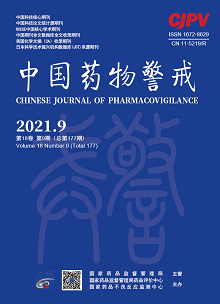|
|
Evaluation of Psychological Dependency Potential of Dexmedetomidine in Rats in a Self-administration Study
CHEN Ying, Wang Lijin, LI Liang, JIA Yanli, WANG Yu, LI Zike, WEI Na, HAN Gang, WU Chunqi, DONG Yansheng
2021, 18(9):
821-825.
DOI: 10.19803/j.1672-8629.2021.09.06
Objective To evaluate the psychological dependence potential of DEX at an effective or higher dose by using self-administration in rats. Methods The dose design, grouping information and training procedures were as follows:①Self-training test: Thirty male SD rats that had their jugular vein access established were selected and randomly divided into three groups: the vehicle group, D-methamphetamine hydrochloride group (MA group) and DEX group. The rats in the vehicle group were injected intravenously with sodium chloride solution (0.25 mL/kg/infusion), those in the MA group with MA solution (dosage of 0.05 mg/kg/infusion), and those in the DEX group with DEX preparation (7 μg/kg/infusion (Day 1), 1 μg/kg/infusion (Day 2), 0.5 μg/kg/infusion (Day 3~7). The rats were trained for self-administration for 2 hours on each of the seven days under FR1.②Substitution test: During the self-training test, MA was substituted by DEX preparation (0.5 μg/kg/infusion) for 6 days before MA was given for 10 days as recovery training. The numbers of active pokes and times of infusion were recorded. Results ①Self-training test: According to the results of 7 days of training, the numbers of active pokes and times of infusion on Days 2 to 7 in the MA group were increased significantly compared with the control group (P≤ 0.05), suggesting that a proper test model was established that could be used to evaluate psychological dependence potential of DEX. The numbers of active pokes and times of infusion on Day 1 and Days 3 to 7 in the DEX group hardly changed (P > 0.05), which indicated that DEX did not induce psychological dependence potential. ②Substitution test: There was a significant decrease (P≤0.05) in the numbers of active pokes and times of infusion in the DEX group during the substitution except for Day 1, but there was a significant increase (P≤0.05) in the numbers of active pokes and times of infusion in the MA group during recovery except for the first 2 days, indicating that DEX could neither maintain the reinforcing effect of MA nor possess the psychological dependence potential of MA. Conclusion DEX itself does not have any positive reward effect or psychological dependence potential, so it cannot cause addiction or maintain the reinforcing effect of MA in this study.
References |
Related Articles |
Metrics
|
